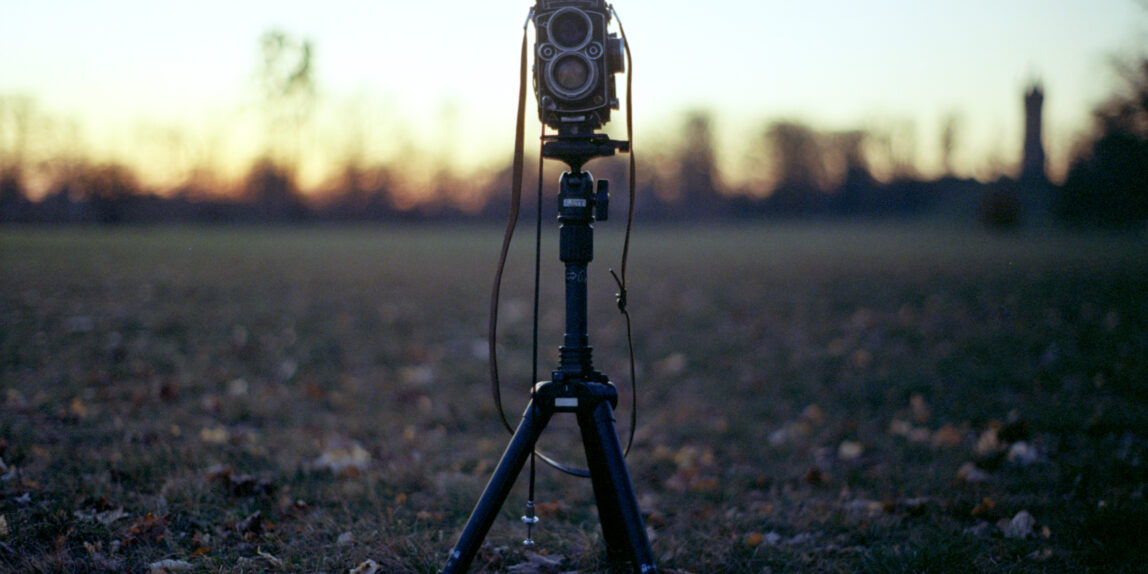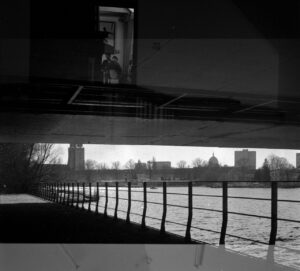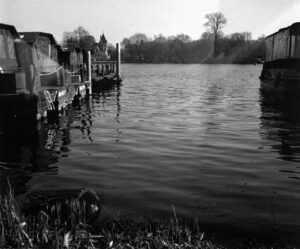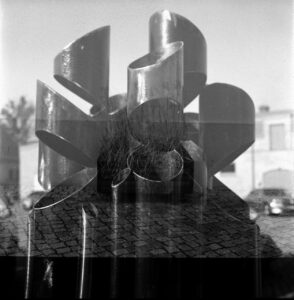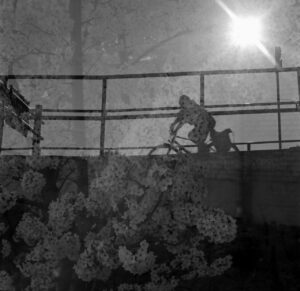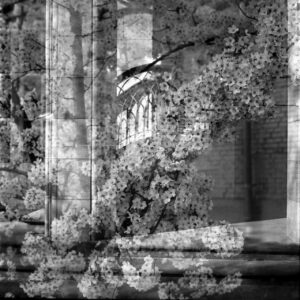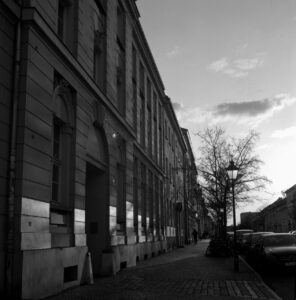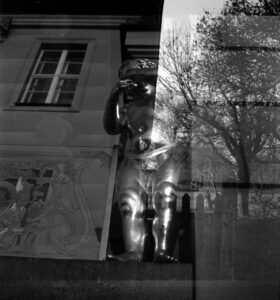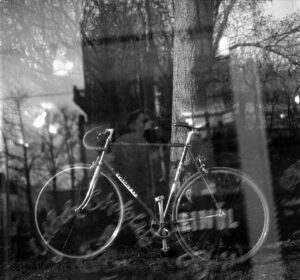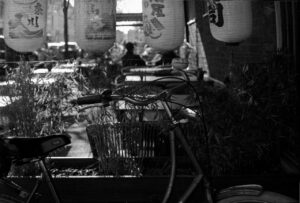serendipity |ˌsɛr(ə)nˈdɪpɪti | noun was allegedly coined in 1754 by Horace Walpole, suggested by The Three Princes of Serendip, the title of a fairy tale in which the heroes «were always making discoveries, by accidents and sagacity, of things they were not in quest of».
For a dedicated project involving the Rolleiflex Twin Lens Reflex camera I had to find out whether and how the camera’s transport mechanism can handle my wish for an entirely double exposed roll of 120-film correctly. There is bound to be affluent information and user experience hanging out there in the web but this did not cross my mind at all until I executed the experiment. The ideal way to find out is to just do it myself.
I rolled in a less expensive roll of monochrome film and headed out the house. Upon completion of the 12 exposures on the roll, I returned the film onto its source spool and re-inserted it in the camera. At this point I noticed the handle performing a couple of turns too many according to my perception before offering the first exposure. It did not feel right but going through the whole rigmarole again of respooling in the dark, re-inserting and perhaps experiencing the same behaviour was out of the question.
Out I went again, returning after one hour, and another hour later I pulled the developed film out of the wet tank in both excitement and disbelief. The latter proved to be confirmed as almost none of the images lined up correctly, with the Rolleiflex not progressing through the images evenly either. What’s more, the final exposure of the second run was cut-off half-way through and even the individual shots did not align with my notes, thus yielding unexpected compositions on top of the fragmentation.
At least the film was evenly exposed since I had no light metering system on me on those photo walks – it could have done with more light here and here.
The upshot was that the Rolleiflex seems to be incompatible with any project involving double exposures across an entire roll, which was a fundamental disappointment, not to mention the project in question was herewith wiped off of the table.
This is where I began my research on other user’s experiences and stumbled upon this very question in a forum post from 8 years ago1, only to find that the mechanical handling of the Rolleiflex TLR is a blackbox and since it has no red window to highlight the film position noted on the backing paper there will be no way of knowing where exactly the film is, let alone how it is aligned. This device is just too professional.
An user named Jaydann Walker, however, referred to the world famous photographer Jerry Uelsmann2 and his œvre, talking about double exposing images in the darkroom instead of cumbersome trials to line up images while blindfolded. While such techniques have been on my radar this genius’ portfolio blew me away entirely with barely a single particle of fascination left in my dry palms about my very own work and approach hitherto.
Coffee & Cigarettes.
It dawned on me that had I been successful in my experiment, I would know nothing about this inspirational figure and what is actually achievable in the darkroom with adequate dedication. So far I had insisted to work only with those moments before me and the camera itself to achieve multi-layered purposes but Uelsmann proved to be a profound source of inspiration for my surrealist imagination.
A strong reminder of the infinite use of finite means, as Wilhelm von Humboldt characterised the idea of language.
As result of my failure I shall embark on vast missions of much finer detail in the final print, allowing for any kind of footage to be part of a vision that meanwhile has received its visa for the creational zone.
A dark moment sensitised my eyes to invigorating rays of light. Thank you.
References
- Photo.net: Double exposure on Rolleiflex 2.8F (full film) ↩︎
- Jerry Uelsmann: Born in Detroit on June 11, 1934, Jerry Uelsmann received his B.F.A. degree at the Rochester Institute of Technology in 1957 and his M.S. and M.F.A. at Indiana University in 1960. He began teaching photography at the University of Florida in Gainesville in 1960 (“my first job offer”). He became a graduate research professor of art at the university in 1974, and is now retired from teaching. He lives in Gainesville, Florida. ↩︎

